Calakmul is an ancient Mayan city located in the middle of an impenetrable jungle in the heart of Mexico’s Yucatán Peninsula. Only a handful of tourists and adventurers venture here, and the more you take away from the experience, the more you will enjoy it.
The city lies in a UNESCO-protected biosphere and Calakmul itself is a UNESCO World Heritage Site.
The road to the ruins of Calakmul
It is not easy to explore this vast city. The ruins lie 60 kilometres from the nearest tarmac road and the journey from the nearest town, Xpujil, takes over two hours. Xpujil itself is six hours south of Cancun, so only those who choose to circumnavigate the peninsula go to Calakmul.
The ruins lie almost on the border of Mexico and Guatemala.
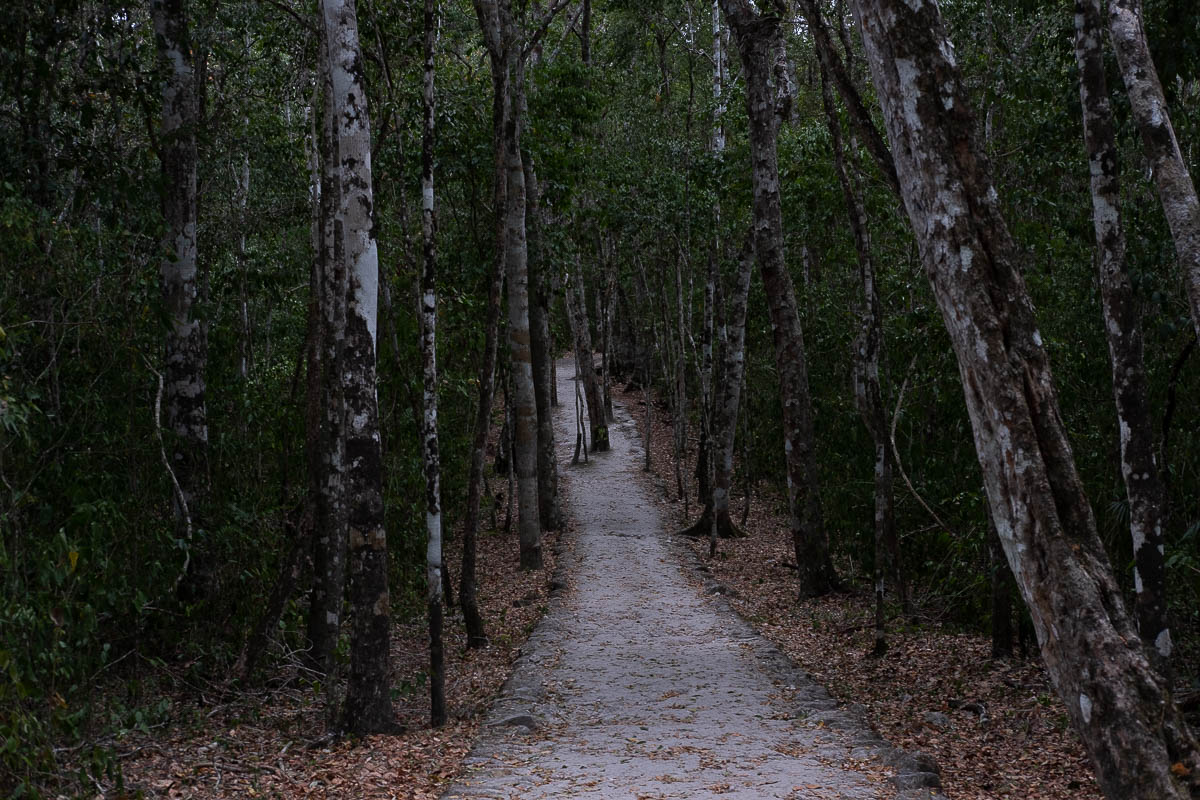
The ancient city of Calakmul
It is estimated that as many as 50,000 Maya lived in this central city of the region at the height of its glory. Since there are really only a minimum of tourists, there are almost no restrictions in the complex.
You are allowed to climb all the structures you discover, including the two giant pyramids. The larger one measures 45 metres in height and is the second largest Mayan pyramid ever discovered.
In the area you will find 117 so-called. stelae, which are large pieces of stone worked into a standing block on which important events and rulers are depicted. Some even still have the original red colour!
History of Calakmul
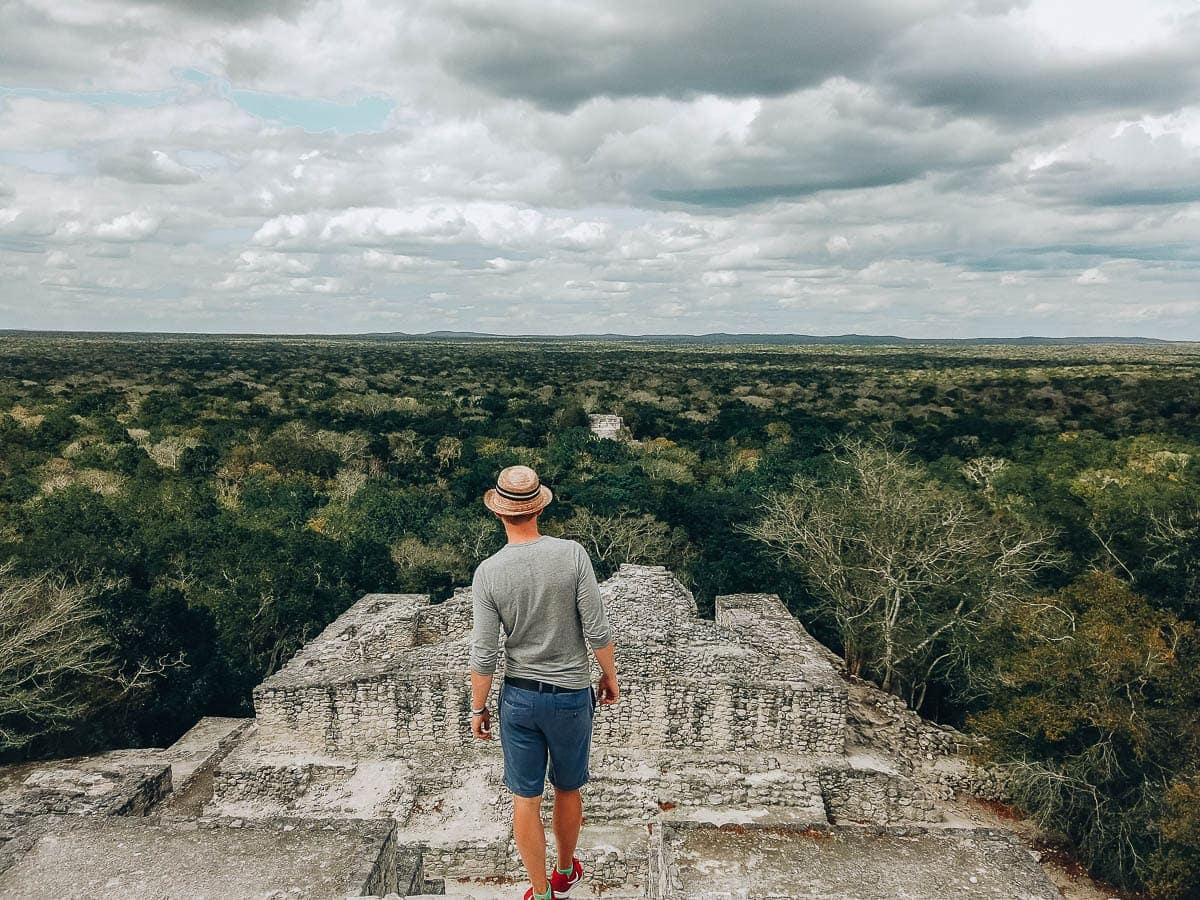
The city existed for twelve centuries, from 500 BC to 900 AD. It was part of a coalition of four cities, of which it was the most important. The coalition was constantly at war with its southern neighbours, most of whose raids were carried out by the city of Tikal.
During its full operation, there were over 6,700 buildings in the city and its immediate surroundings, covering an area of 70 square kilometres.
The kingdom of Calakmul (under the influence of the ruler of Calakmul) included 20 other urban centres, which had a total population of about 200,000.
What you will see in the ruins of Calakmul
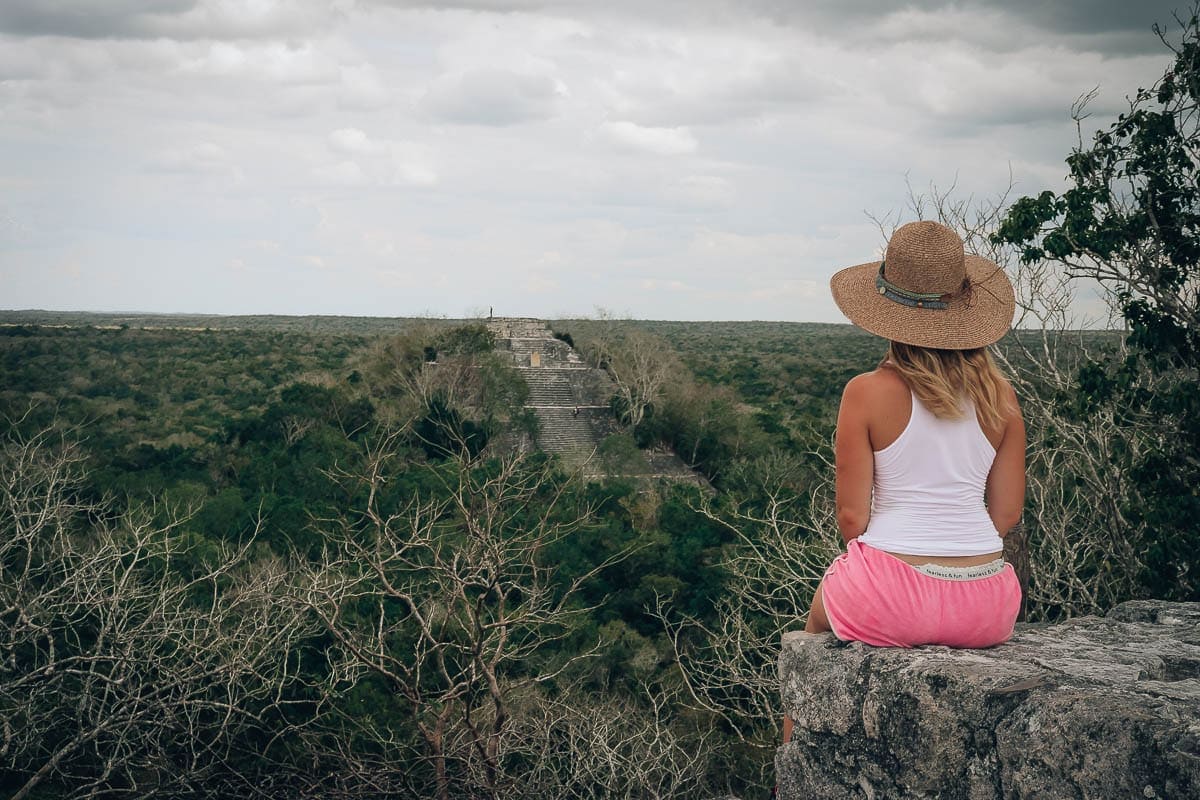
These ruins are the most extensive in the entire Yucatán and you can easily spend several hours here.
In the core of the city, which covers about two square kilometres, we find the remains of about 1,000 different structures. This is also the only area that is open to the public. The rest still lie under jungle deposits, although the locations of all 6,200 structures have been mapped in detail.
The water reservoirs around Calakmul are huge. There is the largest artificial Mayan water reservoir yet discovered. It measures 242 metres in width and 212 metres in length.
Structure 1, as the first of the two major pyramids is unoriginally called, is built on a slight hill and at first glance appears to be higher than the second pyramid, although this is not true.
Structure 2 is the largest Maya pyramid ever discovered. The base measures 120 square metres and 45 metres in height. Like the other pyramids found, this was originally a small pyramid, which the rulers gradually completed to its present form.
The Mayan sacbes stone roads were important transport arteries and there are eight of them in the Calakmul area. Two of them have been mapped, three are half-exposed and the rest are known only through ground imaging. These roads led throughout the kingdom, but also connected Calakmul with its enemies. The longest documented road connecting the town of Calakmul with El Mirador and El Tintal is 68 kilometres long.
For a more detailed description of the history we recommend a foreign source
Loco Gringo
.
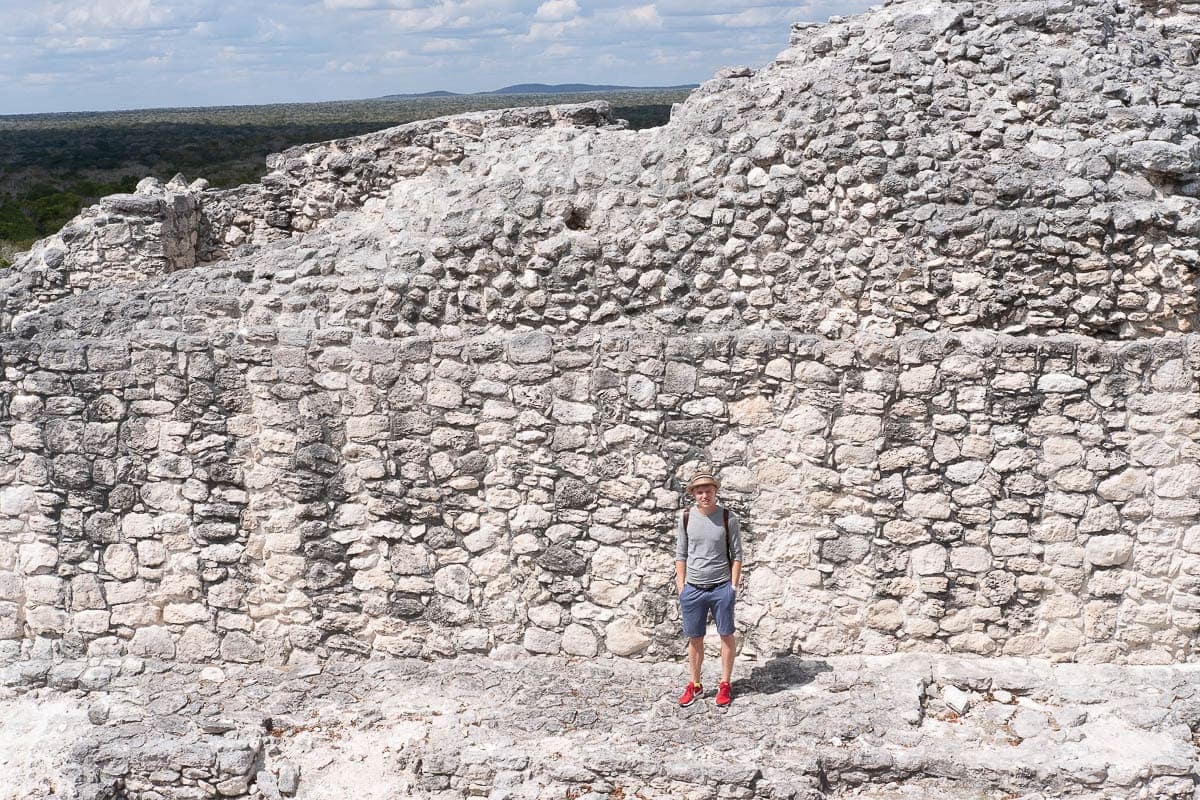
Where to stay near Calakmul
The ruins are far away from everywhere, so we recommend to spend the night in the nearest sleepy town Xpujil and the next day visit the ruins of Becan, which is about ten minutes away.
We’ve been all over the city and we can only recommend one hotel with a calm heart. Hotel Villa Calakmul costs around 500 CZK a night and the owner is a very helpful gentleman. The rooms are clean, coffee is available at the reception and the internet works well. From what we have seen, this cannot be said of the other accommodations in Xpujil.
Map of Calakmul ruins
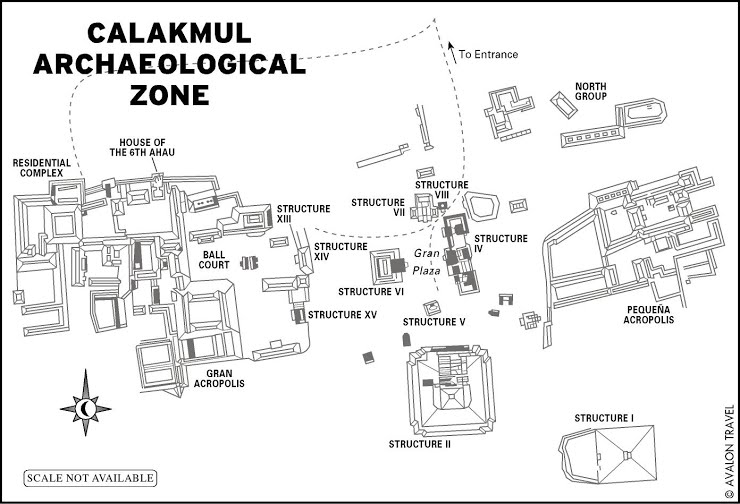
Tips and tricks for travelling in Mexico
What to packTake a look at our Where to get ticketsSearch for cheap airline tickets at Car rentalWe commonly use a grader Reservation of accommodation
Don’t forget about insuranceTravel insurance is an absolute must. For shorter journeys, choose AXA ( Recommended Lonely Planet Yucatanguide |
More articles about Yucatán that you may find interesting
Coba: discovering Mayan ruins in Yucatán
What to do in Tulum? 12 things to do there
Chichen Itza: Mayan Ruins and Mexican Wonder of the World
Laguna Bacalar: 8 things to do there + where to eat
10 tips on what to do in San Francisco de Campeche, Mexico

